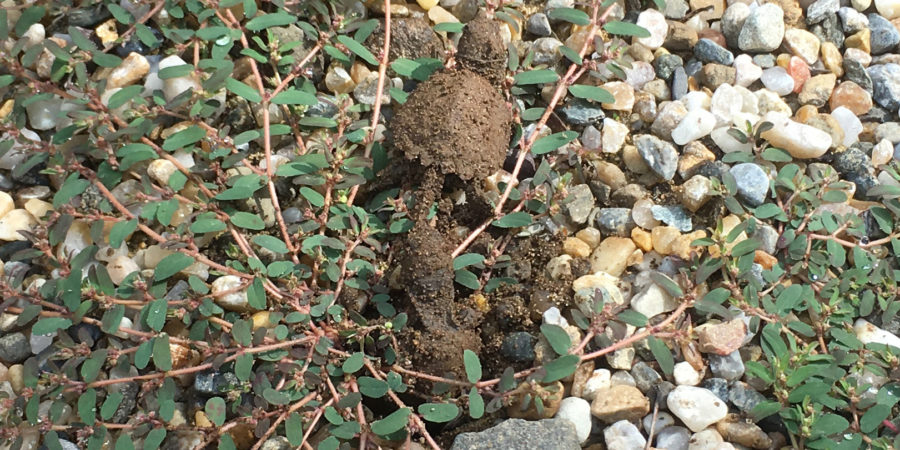She arrived toward the end of June, later than most years, as we were waiting for friends to arrive. At the edge of the woods, over a rock ledge she appeared, stopping at the top to survey her surroundings. There are not many creatures more prehistoric-looking than a full-grown Snapping Turtle.
Just about every year for the past twelve or so we have had a visit from a female Snapping Turtle looking for the perfect place to lay her eggs. The first time we actually saw one of them was an early May morning. My wife screamed, “there’s the biggest turtle in the world in our yard!” I knew immediately it must be a Snapping Turtle — knowing at the very least that Green Turtles and Loggerheads live in the ocean. We looked outside and sure enough, there she was, walking around the backyard, flattening every flower and plant in her path.
I didn’t mind. We watched as she crawled from one area of the yard to the next, every so often stopping to use her strong back legs to push mulch and dirt aside. She decided on a sunny spot in our perennial garden. There she stayed for the rest of the day and into the night. The next morning she was gone. The spot where she laid her eggs was raked and flat. As I looked around I could easily follow her trail — broken stalks, flattened plants and about three spots that she had dug up, testing to see if it was nest appropriate.
FACT: Snapping turtle eggs maintained at 68°F produce only females; eggs maintained at 70-72°F produce both male and female turtles; and those incubated at 73-75°F produce only males.
Connecticut Department of Environmental Protection
About three months later the hatchlings appeared, measuring two inches from head to tail and covered in dirt. They immediately made a mad dash to safety in all directions. I collected the 35 hatchlings placing them in a small, green bucket and took them down to the water, releasing them at the waters edge.

This year’s turtle continued to come towards us with a determined, steady gate. Unlike the first turtle we encountered, she wasn’t searching. No need to test all the areas of the yard. She strode right to the top edge of the three foot stone retaining wall. I expected her to stop, or at least hesitate, and find another route to the patio. She continued, without breaking stride, right over the wall, landing on her back in one of the four soft sand and river stone quadrants of the patio. She easily righted herself and walked directly to the adjacent quadrant — the exact spot a snapper nested last year.
This turtle, who had just made a beeline to this same spot, must have been the same turtle that nested here the year before. I find it remarkable that she walked 50 yards up a hill, tumbled over a stone wall and walked to the same four by four foot area of the patio — without a wasted step.
This is one turtle that doesn’t need to search for her nesting spot. She knows exactly where it is. We’ll make certain to leave that area clear again this year as we look forward to her next arrival.
OBSERVATION: The Snapping Turtles have always arrived the day after a good rain. I assume because it’s easier to move the sand or dirt to build her nest. And, the nesting spot is one of the sunniest areas she can find to maintain the correct temperature of the eggs.
